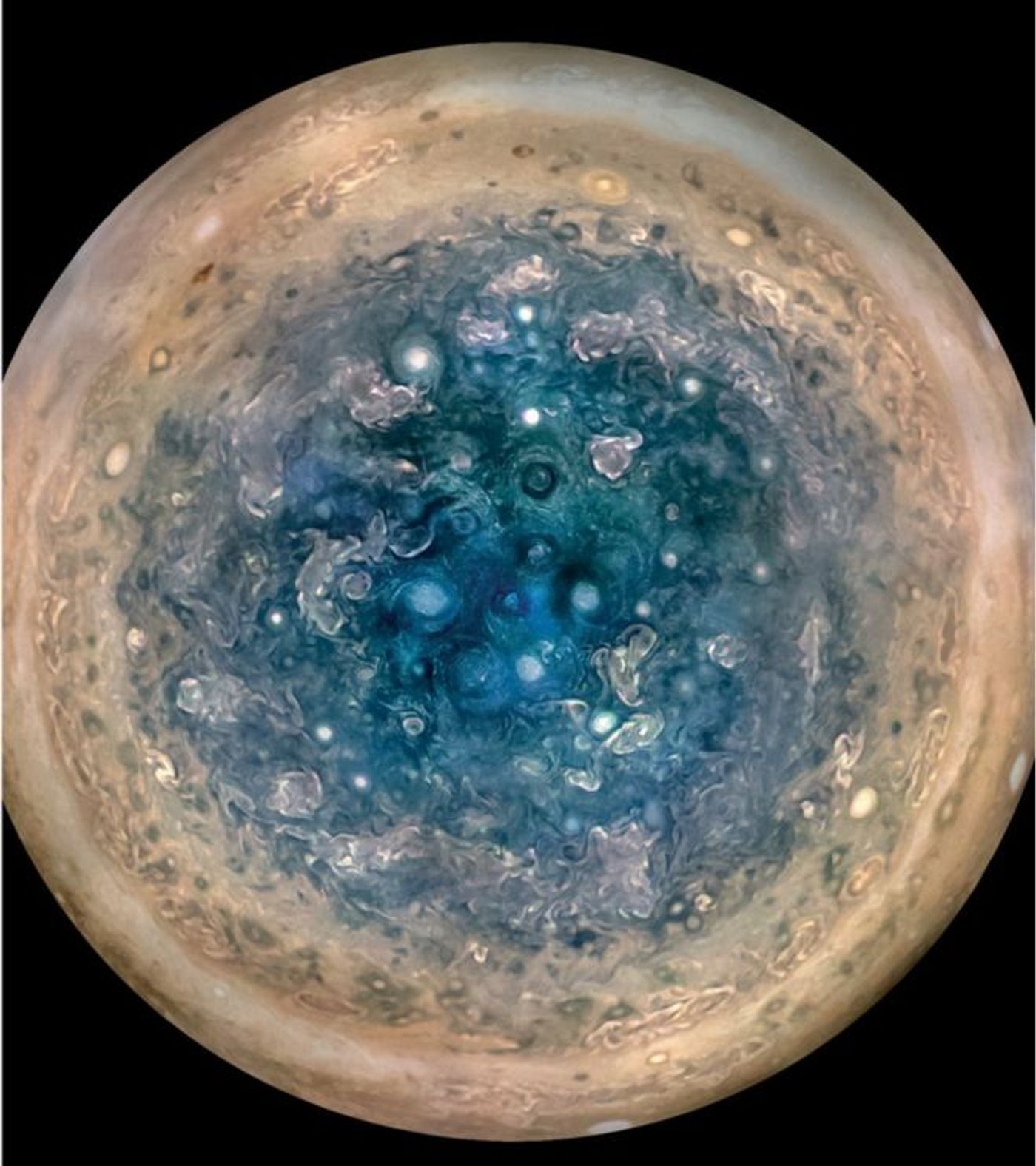As Juno Peers Into Jupiter's Atmosphere, First Scientific Results Surface
Although Juno has been exploring Jupiter for over 10 months since project Orbital Insertion, which was carried out on Independence Day in 2016, we are only just now starting to see some of the scientific results from the spacecraft, proving that the 5-month journey to Jupiter was well worth it.
Two separate studies published in the journal Science (here, and also here), as well as 44 different studies published in a special collection found in the Geophysical Research Letters, are all helping to rewrite our understanding of Jupiter and how the giant gassy planet works.
"We're getting the first really close up and personal look at Jupiter and we're seeing that a lot of our ideas were incorrect and maybe naive," said Juno principal investigator Scott Bolton from the Southwest Research Institute in San Antonio, Texas.
Image Credit: NASA/JPL-Caltech/SwRI/MSSS/Betsy Asher Hall/Gervasio Robles
Juno’s repeated peering into Jupiter’s atmosphere with all of its sensory equipment and as closely as 2,600 miles above the cloud-tops has revealed a menagerie of data and images that even experts in the field weren’t expecting to see. The collage of cloudy storms that seem to appear on Jupiter is just fascinating to say the least.
In some detailed images, which take a closer look at Jupiter’s South pole, Juno captures stunning imagery of massive 870-mile-wide hurricane-like storms that are literally touching one another at their sides. The North pole, on the other hand, is home to a massive hexagonally-shaped storm that researchers can’t seem to explain.
In addition to the storms, researchers have been dropping jaws in the midst of fascination with the way the planet’s atmospheres and auroras work, as well as the very strong magnetic field.
Related: Here's what Jupiter's magnetic field sounds like, according to Juno
Researchers are, without any shadow of a doubt, interested in learning more about Jupiter’s magnetic field. Since we can’t really look at the dynamo of rocky planets, which produce magnetic fields deep inside their hardened cores, Jupiter’s gassy makeup provides a great opportunity to observe its dynamo in action, enabling researchers to see what produces these magnetic fields in planets once and for all.
With Jupiter’s its strong gravitational forces, Juno is forced to take on a highly-elliptical orbit that completes once every 53 days to collect its information. The instruments are capable of not only seeing the exterior of the planet, but also peering deep within to see the inner layers of gas that make up the planet.
Related: Juno undergoes problems with its engine valves and computer software
Importantly, this capability has led researchers to believe that the planet may not have a dense and hard core at all. Instead, those dense elements may be much more spread out across the entire planet’s mass, swirling around in the storms and the clouds at high velocities. Swirling among all those dense elements are bands of ammonia, which researchers have compared to that of Earth's atmosphere.
There is a ton more that we’d like to learn about Jupiter, the largest known planet in our Solar System, and fortunately Juno has a few more years to collect data and help us unravel some mysteries. Until then, of course, mankind’s naive perceptions of certain things may continue to be proven wrong by science.
It should be nothing ltess than fascinating to see what else researchers can find out about Jupiter before Juno finally says goodbye in the future.
Source: BBC, New York Times









